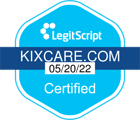In Canada, working parents account for over 40% of the workforce (Cleo, 2020). Furthermore, in 2022, 75.2% of mothers with young kids worked 2022. That’s 3.3% higher than surveyed in 2019, and the numbers continue to rise (BNN Bloomberg, 2023).
Working parents face unique challenges when it comes to balancing the demands of work and family. However, despite today’s leading organizations recognizing the invaluable contributions of working parents, a concerning 58% of respondents to KixCare’s survey reported experiencing burnout.
With the combined pressure from the office and at home, it’s no wonder that 78% of participants admitted feeling stress and anxiety at work. Providing support to working parents offers a promising opportunity for employers to retain and attract talent.
Much of the advice on supporting parents in the workplace is lofty. Here, we present 5 concrete ways to support working parents in your organization, making them feel better supported at home and work.
Provide access to a pumping room
The Canadian Human Rights Act (the Act) is a semi-constitutional law in Canada that promotes equality in the workplace and discrimination surrounding pregnancy and childbirth – this extends to include breastfeeding (Canadian Human Rights Commission).
Providing access to a private, safe space where new mothers can pump their breast milk peacefully is essential for supporting working parents and equality in the workplace.
Unfortunately, it’s all too common for pumping rooms – and new mothers – to become an afterthought within the workplace, leaving women walking long distances to find an appropriate place to pump.
Mothers need a private place to pump several times throughout the day within their professional space. At a minimum, this space should include the following:
- A door that locks: To enable new mothers’ privacy while they pump.
- A comfortable chair: For mothers to sit in while they pump.
- A tabletop surface: To accommodate bottles, pumping equipment, and laptops.
- A microwave: So mothers can sterilize their pumping equipment.
- A fridge: For milk storage throughout the day.
- A sink: For cleaning pump parts and hand hygiene before and after pumping.
- Outlets: For their breast pump and laptop.
Providing a clean, safe space to pump at work shows an employer’s respect for this important part of motherhood. Furthermore, by giving access to a pumping room, mothers are able to perform their best in the workplace while providing for their children.
Provide flexibility
A survey by Forbes found that 51% of working parents cite increased productivity as a direct benefit of remote work. In addition, 61% of working parents said they wanted to work remotely full-time, while 37% preferred a hybrid work schedule.
Working parents have commitments throughout the day which are unrelated to work. For example, working parents face daily obligations such as:
- School drop-off/pick-up.
- Their child becomes sick, so they must stay home.
- Doctor/Dentist appointments.
- Extracurricular activities.
- Daycare shortage.
- School holidays and snow days.
And the list goes on.
Giving parents the flexibility to work around these events means that they can integrate their parenting and professional lives instead of having to choose between the two.
By providing parents with the option of an entirely remote or hybrid work schedule, you are allowing your employees to create the schedule that works most effectively for their family unit.
Additionally, in many ways offering remote work benefits the employer. It boosts workplace morale, increases retention, and decreases turnover. It also increases productivity, can save your company money, and will allow you the freedom to hire the most qualified candidates.
However, if fully remote or hybrid work is not a realistic option for your organization, you can still offer flexibility to your staff. Consider introducing core working hours. Core working hours mean identifying a set of hours when team members agree to be “live” and available to one another for meetings or feedback. Thus, allowing employees the flexibility to adjust their working hours during the rest of the day.
Improve maternity leave conditions
Recently in Canada, parents have been given the option of extending their maternity or parental leave from 52 weeks to 78 weeks (Canadian Government). Parents who choose to extend their leave will be given the same total amount of benefits, but the benefits will be given in lower increments over a longer period of time.
Women with access to better-paid leave (those with employer top-ups) are twice as likely to return to their employer as those without paid leave.
To retain valuable talent, employers must work towards easing working parents’ transition back to work after being on leave. Now, more than ever, working parents feel distanced and ostracised upon returning to work after parental leave.
Becoming a family-friendly workplace doesn’t have to mean complex changes. Simple interventions such as adding more flexibility to working hours or location and re-examining your company’s maternity leave policies about return-to-work strategies can make a huge impact.
By allowing parents to have some say in how they want to use their maternity/paternity leave, you empower them in their professional environment, which eases their return to work.
Some simple flexibilities your company should consider when it comes to maternity leave are:
Combining work and parental leave: Parental leave can financially tax new parents, as EI awarded to new parents only covers up to 55% of their income. This is a huge drop in income for families, especially when tackling the additional costs of a new family member. Enabling flexibility when it comes to parental leave allows new parents to find arrangements that work for them to balance work and parenting. This balance can carry over after parental leave is done.
More flexibility when it comes to EI leaves: By allowing parents more flexibility when it comes to their EI leave, they can feel empowered to return to work. Enabling flexibility could look like any of these options:
- Making EI leave longer: 15% of parents have chosen to spread their benefits over a more extended period with a lower weekly rate to ease the transition back to work (Policy Options).
- Making EI leave shorter: This option is available in Quebec. It allows parents to choose a shorter option with a higher weekly rate if that works best for them.
- Start and stop EI benefits: Another way to support working parents is by allowing them to stop and start their EI leave based on upcoming projects. For example, as an employer, you could ask an employee if they’d consider working on a company project, their EI will be paused, but after completion, they can resume their EI. This makes the prospect of returning to work less daunting after maternity leave.
Create a working parent support group
Whether on Slack, Teams or in-person, creating a working parent support group is a simple and cost-effective way to make parents feel supported and uplifted in the workplace. It’s a safe space where they can be surrounded by people from the same organization going through the same transitions and changes.
As another way to ease the transition from maternity leave back to work, creating a buddy system within the working parents support group is another meaningful way to foster a welcoming and parent-friendly environment. By partnering a new parent back from leave with a parent whose children are a bit older, the new parent learns more about parenthood and gets some top tips and tricks about navigating the transition back to work from someone who has done it before!
Creating a working parent support group requires minimal investment on behalf of the employer but can make a world of difference for the working parent.
Include family-friendly healthcare benefits
Over half (55%) of the respondents to our KixCare working parent survey said they believed that their employer does not care about their family. Not only is this incredibly disheartening, but it also puts employers at risk of losing capable talent because they are not providing adequate support for working parents.
Tailoring your benefits solutions to the needs of families means you can help reduce employee stress and anxiety and decrease the time working parents need to take off to get care for sick children. Indeed, our survey found that 72% of participants agree that employers should provide support and specific programs to working parents.
Family-friendly benefits, such as accessible pediatric healthcare services, fertility services, paid leave and childcare assistance, better support for your parent employees and reduced absenteeism in the workplace. By providing inclusive family benefits, you help your business attract and retain top talent and create a more dynamic work environment where employees can focus on creating a fulfilling career while minimizing the stressors of home.
The Kix360° Approach
KixCare’s pediatric health and wellness membership, Kix360°, offers 24/7 access to a team of specialized pediatric Registered Nurses via messaging and video calling. With unlimited visits per family, every child in your employees’ home gets the specialized care and support they deserve whenever and wherever they are.
Pediatric Nurse Practitioners support our KixNurses in providing diagnoses, testing and prescriptions. They will also provide referrals as needed to Pediatricians, specialists, and Allied Healthcare Professionals.
All KixTeam members have trained in leading children’s hospitals, including SickKids, CHEO, McMaster Children’s Hospital, Montreal Children’s, and LHSC Children’s Hospital.
Additionally, our KixTeam can provide quality clinical services such as pediatric mental health expertise, medication counselling support (including prescriptions), medical notes and form completion, expert parenting and health resources, and webinars from pediatric professionals to empower your employees in their parenting journey.
By providing your working parents with benefits that help the whole family, you show that 55% of employees that you do care.

Visit our Employer Page to learn more about adding Kix360° to your company’s Employee Benefits Plan.



![Verify Approval for [YOUR-WEBSITE-URL].com](https://static.legitscript.com/seals/11167439.png)
